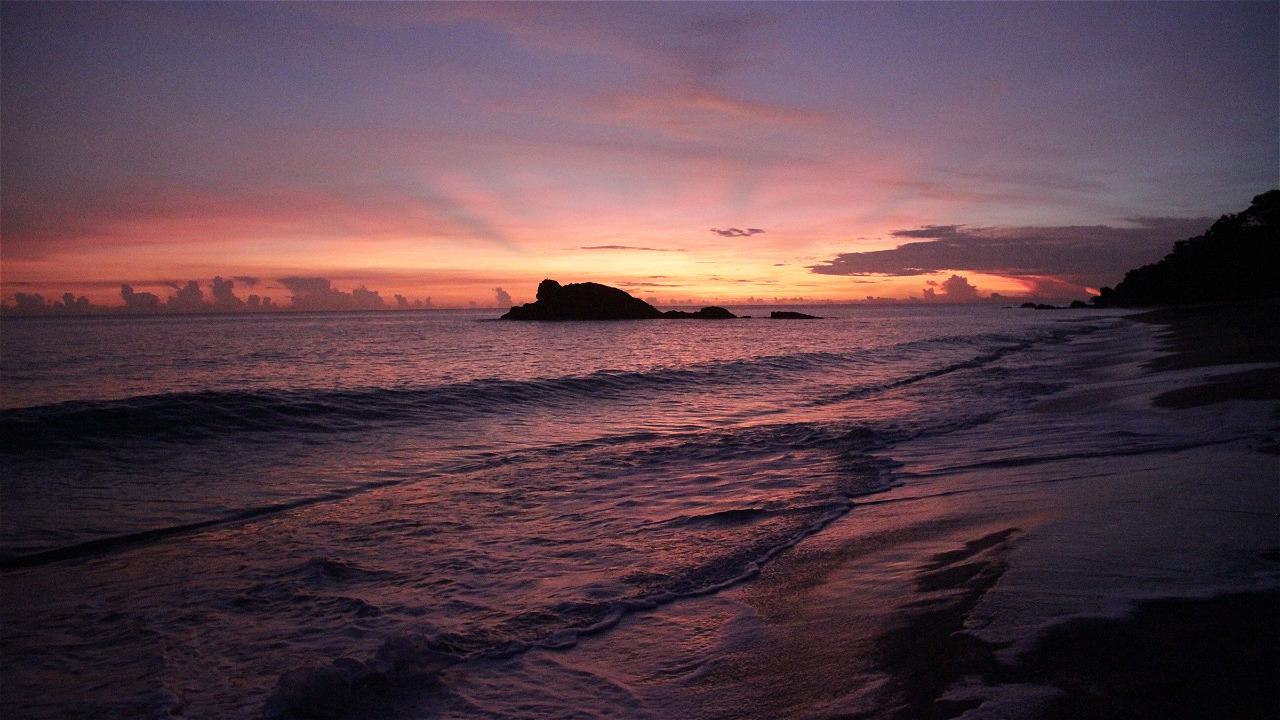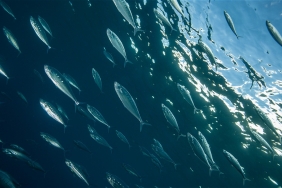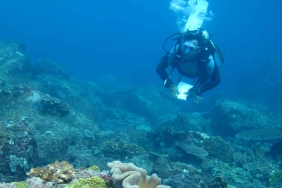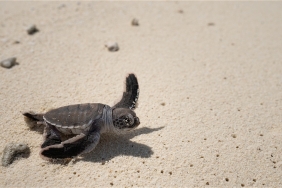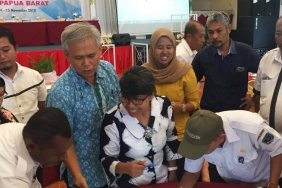ELEGANT BEAUTY
Author: Amkieltiela (Marine Science and Knowledge Management Officer, WWF-Indonesia)
The first time it was decided to organize an expedition to the Koon region, I was very excited. The reason was that this expedition would be my first experience to this location. I had heard so many positive stories about the Koon Island and Neiden Island Marine Protected Areas (MPAs); from the abundance of fish, the high diversity of coral reefs, to the strong royal culture. I immediately contacted Opik (Taufik Abdillah's nickname, WWF-Indonesia Program staff Inner Banda Arc Subseascape/IBAS) to coordinate preparations because this expedition activity is our responsibility.
Our preparations began with identifying the needs during the activity, identifying team members, and drafting a budget. After approximately 2 months of preparing for RHM activities, on April 13, 2016, the entire team gathered in Ambon with FRS Menami already waiting. The team consisted of representatives from the East Seram Marine and Fisheries Service (DKP), Wakatobi National Park Center, Ambon Navy, Terangi Foundation, and WWF-Indonesia.
Unfortunately, the departure to Koon Island and Neiden Island MPAs had to be delayed until April 17, 2016 because the ship's exit clearance had not been issued. While waiting, our days were filled with workshops and other useful activities. At 10:00 a.m. WIT on April 17, 2016, FRS Menami departed from Ambon to Koon Island and Neiden Island MPAs and arrived the next day at 11:00 a.m. WIT. The team was divided into two and each of them immediately collected RHM data in one location. Furthermore, RHM was carried out for the next 3 days. Data collection locations are scattered inside and outside the MPA as basic data to see the status of the coral reef ecosystem.
The conditions in the field showed the opposite of the information I had been getting. Although the majority of coral reef ecosystems are quite good, it turns out that there are still many coral fragments (rubble) which indicates that there are still fishing activities using destructive materials or fishing gear, such as bombs and potassium. In fact, this area was reserved by the local regent in 2011 and supported by the Kingdom of Kataloka by forming a Marine Conservation Agreement (MCA) area in the same year. (Read also Petuanan rights-based utilization in Koon Island, Maluku)
In addition, in most of the observation sites, the phenomenon of coral bleaching (bleaching) was found, especially in soft corals (soft coral) and anemones (home to clown fish, Nemo). Whereas in hard coral species (hard coral), most were found to be bleached, especially those with branched growth forms (branching). Coral bleaching is the phenomenon of algae (zooxanthellae) coming out of coral animals. As we know, coral animals have a mutualistic symbiosis with algae zoonxanthellae which provide 'food' for coral animals. In turn, coral animals provide protection from predators for the algae. The loss of zooxanthellae from coral animals can result in the death of coral animals due to the absence of adequate nutrient intake. Generally, the phenomenon of bleaching is caused by an increase in sea surface temperature. One indication of the cause of the increase in sea surface temperature in 2016 is El Nino.
El Nino is a Spanish term that means boy. El Nino is a broad-scale interaction between the ocean and atmosphere that causes an increase in sea surface temperatures in the Central to Eastern Pacific Ocean (NOAA, 2016). This year, El Nino started from January 2015 to May 2016. The highest temperature increase of this natural phenomenon was 2.4oC in November 2015 and began to decrease slowly until May 2016 (Becker, 2016). The bleaching phenomenon found around the Koon Island and Neiden Island MPAs is thought to be the impact of El Nino in the Pacific Ocean. This should be a concern for the government to preserve the area. Various ways need to be done to minimize the pressure on coral reefs so that they can return to normal and continue to provide marine resources to meet the needs of local communities.
References
- Becker, E., 2016. NOAA Climate.gov. [Online] Available at: https://www.climate.gov/news-features/blogs/enso/may-2016-el-niñola-niñ… [Accessed May 25, 2016].
- NOAA, 2016. National Oceanic and Atmospheric Administration United States Department of Commerce. [Online] Available at: http://oceanservice.noaa.gov/facts/ninonina.html [Accessed May 25, 2016].

